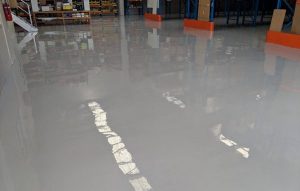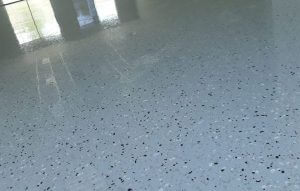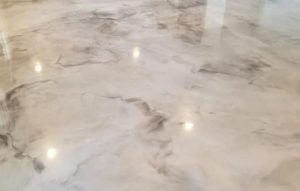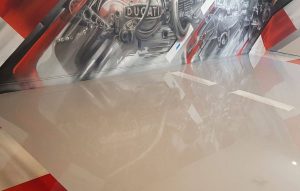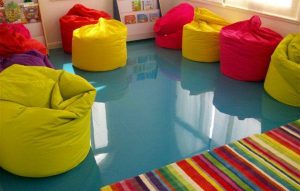What Is Cementitious Floor Topping? When And Why Would You Need It?
Floors for industrial facilities must be simple to maintain while still being durable enough to endure the rigorous conditions of operation. Not only does the appropriate sort of floor guarantee that the facility runs smoothly, but it can also help to ensure that the facility complies with industry-specific health and safety laws. As a certified service provider of floor preparation Sydney, Renucrete suggests cementitious floor topping for any demanding environment.
When compared to the demands of a residential or commercial facility, the demands of an industrial environment are significantly different. This implies that an industrial floor must have several physical and performance characteristics. As a result of its great durability, slip resistance, low maintenance requirements, and good chemical and thermal shock resistance, it has become a popular choice.
In this blog, you’ll find out what cementitious floor topping is when you need it, and why would you need it.
What is Cementitious Floor Topping?
In essence, cementitious floor topping adds concrete cement-based goods over the top of your existing concrete slab. They are mostly employed for ornamental purposes as well as for damage restoration. The thickness of the overlay that you apply is entirely up to you.
The application of self-levelling concrete over any existing tiles or concrete floors is the first step in the cementitious floor topping process. After that, it is mixed with a cement overlay in the colour of your choice. Finally, several coatings and sand are applied to the surface.
It is possible to give a sound surface an attractive facelift by using polished overlays. Cementitious material is mixed and put immediately on top of the existing concrete, without the need for a primer. Overlays can be coloured in a variety of ways, polished to give them a reflecting sheen, or customized with stencils and stamps. Certain products are intended for use on indoor flooring, while others are intended for use on outdoor surfaces.
Going deeper…
Even the greatest concrete can develop fractures, discolouration, popouts, and other faults over time and with exposure to the elements. Despite the fact that restoring concrete can assist in the correction of some of these issues, the repairs themselves might be conspicuous and ugly. It’s no surprise that many homeowners believe that the only way to improve the appearance of unattractive concrete is to pull it out and replace it with new. However, if the concrete is otherwise in good condition, a decorative overlay can be a more cost-effective solution. Surface defects in your existing concrete flooring can be concealed by using a concrete overlay, such that of a cementitious floor topping. When combined with a number of aesthetic alternatives, practically any concrete slab can be completely transformed at a lower cost than the alternative of tearing it up.
When to have Cementitious Floor Topping?
Concrete overlays are only as good as the surface they are placed on, so choosing the right surface is essential. It is important to remember that if the concrete is broken or surface up, the overlay will also crack and come up with it. For your cementitious floor topping to survive as long as possible, you must be certain that the concrete is not severely harmed. Existing concrete can be strengthened and treated in a number of different ways. However, due to the fact that the ground moves in response to weather conditions and moisture, you should be aware that there are no solid guarantees that the overlay will not delaminate or split in the future. At the end of the day, your floor’s quality is dependent on the quality of service you acquired.
Look for businesses that give high-quality services. Instead of replacing the floor totally, consider resurfacing it instead. Resurfacing a surface can breathe new life into it while also costing significantly less than removing and replacing it with a new floor or wall.
Why Should You Get It?
Cementitious floor topping is the process of laying down a layer of high-strength concrete on top of an existing layer of concrete that has become worn out. A finished floor surface is created by pouring a layer of concrete over an existing slab to cover the old layer of concrete with a finished floor surface.
To give a finished floor surface on top of structural floors, concrete topping slabs are typically put on top of the structural floors. To completely remodel the appearance of your floor on a budget, cementitious floor topping is a fantastic option. It restores the appearance of your flooring’s million-dollar value. It is an excellent choice for flooring that is beginning to show signs of wear. Furthermore, it makes no difference whether you are working with tiles, concrete, or cement sheets. Cement overlays are the most effective flooring option for all of these flooring kinds. As a result, you will no longer have to be concerned about cracked tiles or unclean grout in the future.
To have an idea of what to expect from cement overlays, here are some of the benefits:
- No grouting
- Incredibly durable
- Low maintenance
- A budget alternative for cement flooring renovation
- An array of colours available in matte or gloss finish
- Increased thickness of the floor covering
- Reduced expenses associated with making repairs to the finished structure.
- Reinforce the concrete, which is currently very brittle.
- A fresh new surface of concrete that will cover any defects that were present in the original concrete.
- Concrete flooring that is level and flat and will either be polished or used as a base for substitute flooring products
- Reduced stress on the machine’s moving parts (smoother drive for equipment)
Cementitious Floor Topping Procedure
1. Base Concrete Requirement
Prior to the placement of cementitious floor topping over an already-existing concrete surface, it is necessary to conduct a preliminary evaluation. The concrete that is already there must be dense and robust. It is important to ensure that the base is clear of cracks since the topping concrete does not cross over the fractures in the existing concrete, and as time goes on, the fissures may also become visible in the topping concrete. It is not recommended to use concrete platforms that are frail and feeble because they do not establish adhesion between the old and new concrete.
2. Preparation of the Base Concrete for the Foundation
This is a very critical phase in the process of laying cementitious floor topping because it ensures that the old and new concrete will join and adhere to one another in the correct manner. The concrete surface that the topping slab is going to be set on needs to be smooth, spotless, and uncontaminated with dust particles or any other kind of debris. Before any topping concrete is set down, any existing concrete must first be removed in its entirety. In the event that the smooth surface layer of the base concrete is achieved during the finishing process, the surface will need to be roughened with the assistance of mechanical scabbing or scarification equipment in order to expose the rough aggregate of the base slab. It is necessary to use a vacuum cleaner in order to eliminate the dirt, dust, and debris that is loose.
3. The Application of the Concrete Topping
An examination of the nature of the existing slab is required prior to the placement of the cementitious floor topping. The water absorption rate in the foundation slab is to be determined by pouring in a trace amount of water and observing the result. If the water is absorbed in only a few minutes, the slab needs to be maintained wet for at least four hours before the topping concrete is placed, and all of the water needs to be removed right before the topping concrete is put down. The reason for this is because that once the wet concrete has been placed in the base, all of the water content of the concrete has been absorbed by the base slab, leaving the topping concrete with an inadequate amount of water. If there is no evidence of water absorption, then the topping concrete can be placed according to the procedures typically used. The thickness of the topping slab that is often used falls somewhere between 50 and 100 millimetres. Steel reinforcement is given for the topping slab, taking into account both its thickness and the requirements for it.
First, a slurry consisting of cement, sand, and a latex bonding agent is poured over the surface. The cementitious floor topping is poured into place just in time to prevent the slurry from drying out. Aggregates are required to be included in the concrete mix. sand and cement, in varying proportions according to the topping’s required level of strength. It is required that a minimum mix of grade M20 be laid. Spreading, compacting, screeding, and bull-floating the topping concrete in the same manner as one would a concrete floor are all necessary steps.
4. Finishing
The type of finishing that is necessary for the cementitious floor topping is determined by a number of different elements, including the location, the surface, and the usage. In the event that topping concrete is applied to the already existing slab, the surface will be given a rough finish in preparation for the installation of flooring material. It is possible to achieve a smooth finish on the concrete if it is applied directly to concrete flooring.
5. Treatment
Cementitious floor topping needs to be cured properly if it is to achieve its maximum ground strength, high durability to surface abrasion, and low impermeability, and if the progress of curing shrinkage cracks is to be prevented or downplayed. These goals can only be accomplished through proper curing of the concrete. Curing concrete properly delays the effects of differential drying until the pavement is better able to resist their effects. This delays the effect of differential shrinkage, which in turn lessens the effect of curling. Curing also decreases the impact of differential shrinkage. Curing must be done for a minimum of seven days at the very least.
Call RenuCrete Sydney Today!
RenuCrete provides floor preparation Sydney services, such as cement overlays. Additionally, we are equally adept in honed concrete floors, garage polished concrete floor, polished overlays, and burnished concrete finishes. Contact us immediately at 0410 223 300 for a free price and consultation.
EXPERT CEMENTITIOUS FLOOR TOPPING SERVICES
Get in touch with RenuCrete for more information about our Sydney Western Suburbs and surrounds concrete polishing services. Call 0410 223 300.
Get In Touch
To book an obligation free consultation or enquire in general, give us a call. We are always happy to help!

